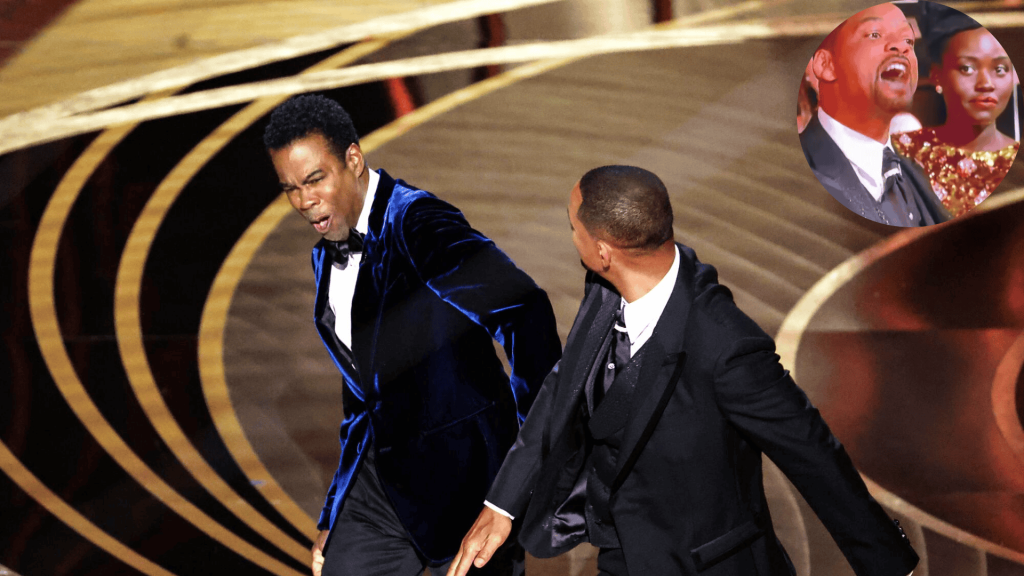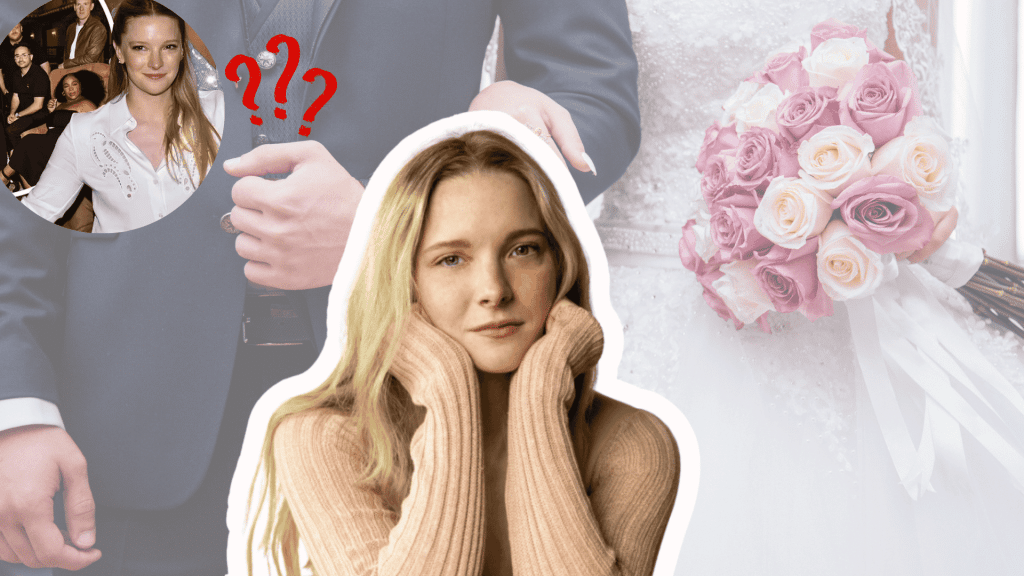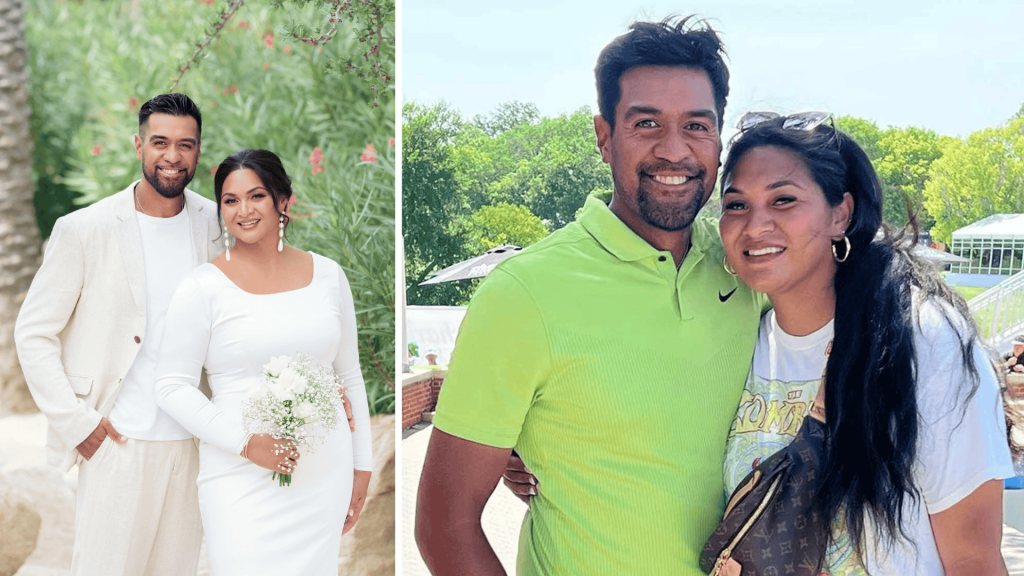Have you ever wondered why a simple outfit choice can spark heated debates? Fashion has always been more than just clothes.
It’s a form of self-expression that can challenge norms, break traditions, and sometimes offend people. From miniskirts in the 1960s to ripped jeans today, certain styles continue to divide opinions.
Some people view fashion as an art form and a symbol of freedom. Others view bold choices as inappropriate or disrespectful. The truth is, fashion controversies stem from deep-seated cultural, religious, and social beliefs.
In this blog, I’ll outline the primary reasons why fashion choices elicit such strong reactions and why this debate is likely to continue indefinitely.
Why Fashion Choices Spark Heated Debates?
Fashion conflicts happen because clothes carry hidden meanings beyond their practical use. When you choose an outfit, you’re not just picking something to wear.
You’re making a statement about your values, beliefs, and identity. This creates friction when different groups have opposing views.
The internet makes fashion conflicts worse. Social media spreads controversial outfits instantly worldwide.
What used to be local disagreements now become global debates within hours. Online comments sections turn into battlegrounds over appropriate dress.
Fashion also reflects power struggles. Throughout history, authorities have controlled what people wear. Uniforms show rank. Dress codes enforce rules. Breaking these clothing barriers challenges existing power structures.
This explains why simple fashion choices can create such strong reactions. People aren’t just responding to clothes, they’re defending their worldviews.
6 Main Reasons Fashion Creates Controversy
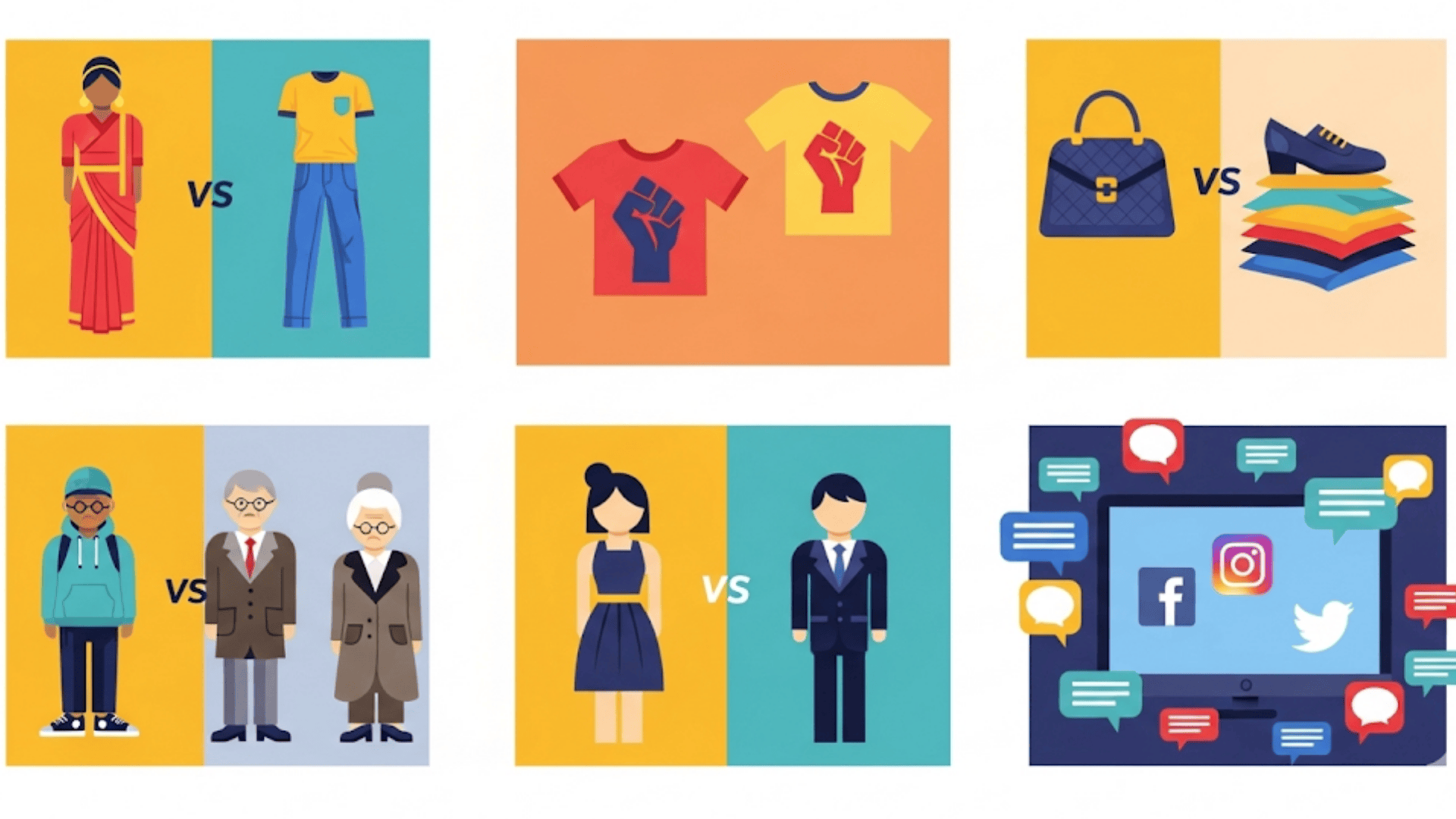
Now, let’s examine the specific reasons that make fashion so contentious in our society.
1. Cultural and Religious Differences
Fashion clashes occur when styles conflict with traditional values. Many cultures have specific dress codes that reflect their beliefs and customs. When someone breaks these unwritten rules, it creates tension.
Religious communities often have strict clothing guidelines:
- Modest dress requirements in conservative faiths
- Head covering traditions in various religions
- Color restrictions during certain ceremonies
- Body coverage expectations in sacred spaces
Different cultures also have unique fashion taboos. What is considered normal in one country may be shocking in another. Western crop tops could offend conservative societies. Traditional face coverings might seem strange in liberal communities.
The generation gap makes this worse. Older people often stick to traditional dress codes. Younger generations want to express themselves freely. This creates family conflicts and social pressure.
2. Fashion as Political and Social Statements
Clothes can send powerful political messages. Throughout history, people have used fashion to protest, support causes, and challenge authority. This political aspect makes certain fashion choices controversial.
Famous examples of political fashion include:
- Protest t-shirts with controversial slogans
- Flag-inspired clothing that some consider disrespectful
- Uniform modifications that challenge dress codes
- Gender-bending styles that question social norms
Social movements often start with fashion choices. The feminist movement embraced pantsuits. Civil rights activists wore specific colors.
LGBTQ+ communities created rainbow fashion. Each style choice carried deeper meaning. Politicians and celebrities know fashion sends messages.
Their outfit choices get analyzed by the media and the public. One wrong outfit can create scandals. One right choice can show support for important causes.
Workplace dress codes also reflect these tensions. Companies struggle to strike a balance between personal expression and professional standards. What’s appropriate keeps changing as society evolves.
3. Economic and Class Distinctions
Expensive fashion creates social divides. Luxury brands and high-end fashion often spark controversy because they highlight economic inequality. When celebrities wear $10,000 dresses while others struggle financially, it causes resentment.
Fashion inequality shows up in several ways:
- Designer brand obsession among youth
- Fast fashion criticism for poor working conditions
- Sustainable fashion costs that exclude lower incomes
- School uniform debates about fairness and access
Social media makes fashion pressure worse. People often compare their outfits to those of influencers and celebrities.
This creates unrealistic expectations and financial stress. Many feel they need expensive clothes to fit in. The fashion industry faces criticism for promoting unrealistic beauty standards.
Size exclusivity in high fashion brands causes controversy. Representation of plus-size individuals remains limited in luxury fashion.
Thrift shopping and secondhand fashion challenge traditional notions of luxury. Some see it as smart and sustainable. Others view it as inappropriate for certain occasions.
4. Age-Appropriate Fashion Debates
What’s suitable for different ages causes major fashion fights. Parents, schools, and society continually debate the appropriateness of clothing for children, teens, and adults.
These arguments reveal deep concerns about protection, maturity, and social standards.
Common age-related fashion controversies:
- Crop tops and short skirts on young girls
- Makeup and high heels for children
- Revealing swimwear for teenagers
- Youth fashion trends adopted by older adults
School dress codes create the biggest battles. Administrators try to maintain learning environments. Students want to express themselves.
Parents get caught in the middle. These conflicts often end up in courts and media headlines. Different cultures have varying ideas about age-appropriate dress.
Western societies might accept teen fashion that conservative cultures reject. These differences create conflicts in diverse communities.
The internet exposes children to adult fashion at an earlier age. Social media influencers and online shopping make mature styles accessible to young people.
This worries parents and educators who fear inappropriate early exposure.
5. Gender Expression Through Fashion
Fashion rules about masculinity and femininity cause heated debates. Traditional gender norms dictate specific clothing for men and women. When people break these rules, it creates controversy and sometimes hostility.
Gender-related fashion controversies include:
- Men wearing dresses or skirts in public
- Women in traditionally masculine clothing, like suits
- Children choosing opposite-gender clothes
- Unisex fashion trends that blur gender lines
Fashion freedom challenges binary thinking. Many people believe clothes shouldn’t have gender labels. They argue personal expression matters more than traditional rules.
Conservative groups often disagree and resist these changes. The workplace struggles with policies regarding gender expression.
Companies must strike a balance between inclusion and professional standards. Some industries remain rigid while others embrace flexibility.
Celebrity influence accelerates gender-fluid fashion. When famous people wear non-traditional gender clothing, it normalizes the practice. This speeds up social change but also increases resistance from traditional groups.
6. Media and Social Platform Amplification
Social media facilitates the rapid and widespread dissemination of fashion controversies. What used to be local debates now become global discussions within hours. Online platforms amplify both support and criticism for controversial fashion choices.
How digital platforms increase fashion drama:
- Viral outfit photos that spark global debates
- Cancel culture targeting fashion choices
- Influencer fashion fails to become news stories
- Comment sections are filled with harsh criticism
Traditional media still shapes fashion opinions. Fashion magazines, TV shows, and news outlets decide which styles get attention. Their coverage can make or break fashion trends.
The speed of online criticism creates pressure for immediate responses. Fashion brands and individuals must react quickly to controversies. This often leads to hasty decisions and public relations disasters.
Echo chambers make fashion divisions worse. People follow accounts that share their fashion views. This creates isolated groups with extreme opinions on what constitutes appropriate dress.
7 Most Controversial Fashion Moments in History
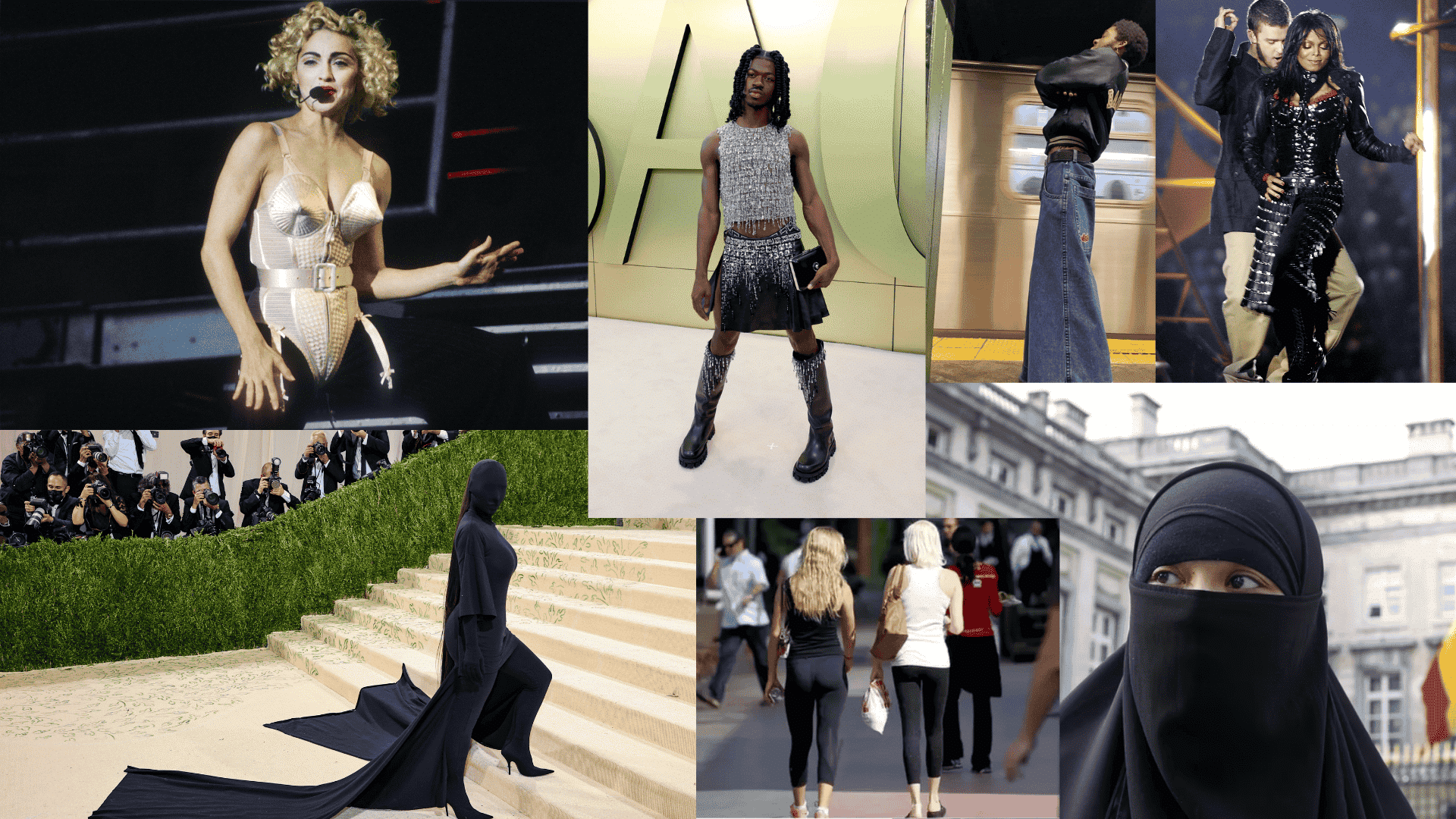
These famous fashion controversies illustrate how clothing choices can have a profound impact on society. Each incident sparked global debates and changed how we think about appropriate dress.
1. Madonna’s Cone Bra (1990) – Her pointed bra design shocked conservative audiences and challenged ideas about female sexuality in fashion.
2. Janet Jackson’s Super Bowl Outfit (2004) – The halftime show wardrobe malfunction created massive media controversy and changed broadcast standards.
3. Sagging Pants Movement (1990s-2000s) – Hip-hop-inspired low-hanging pants faced legal bans in many cities for being inappropriate.
4. Burqa Bans in European Countries (2010s) – Several nations prohibited full face coverings, creating debates about religious freedom versus security.
5. School Yoga Pants Protests (2010s) – Students fought dress code bans on leggings, arguing gender discrimination and body shaming.
6. Kim Kardashian’s Met Gala Looks – Her various outfits sparked debates about cultural appropriation and fashion boundaries.
7. Men in Skirts Movement (2020s) – Male celebrities wearing dresses and skirts challenged traditional gender clothing rules.
Each controversy reflects larger social issues. They show how fashion intersects with religion, gender, race, and personal freedom.
Conclusion
Fashion controversies exist because clothing represents much more than style preferences.
They reflect our deepest beliefs about culture, religion, politics, economics, age, and gender. These debates illustrate the tension between personal freedom and social responsibility.
Understanding why fashion choices spark controversy helps us navigate these discussions better. We can respect different viewpoints while supporting individual expression rights.
Fashion will always be a source of controversy because it touches on fundamental human values and social structures.
The key is finding a balance between personal freedom and community standards. This requires ongoing dialogue, respect, and willingness to understand different perspectives.
What’s your take on fashion controversies? Have you ever faced criticism for a clothing choice, or do you think society should have stronger dress standards?
Share your thoughts in the comments below. I’d love to hear your perspective on this ongoing debate.





